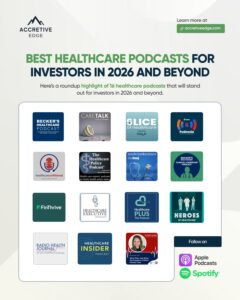Documentation and administrative work are now a major source of frustration and burnout for physicians. Artificial intelligence is starting to make a difference in these pressure points.
In a 2025 AMA survey, three out of four physicians said AI could improve efficiency, and more than half believed it could help with stress and burnout.
This article will look at where AI can be integrated into a physician’s workflow — from before the patient encounter to after the visit. It will highlight examples where tools are already showing measurable impact, review both benefits and limitations, and outline practical ways to start small without disrupting patient care.
Before The Visit: Reducing Administrative Load
A large part of the workday begins before a patient even enters the room. Reviewing charts, gathering prior results, and preparing documentation can take as much time as the visit itself. AI tools are starting to lighten this front-end load.
Scheduling and triage
Some practices are experimenting with AI-assisted intake. Patients complete structured questionnaires online, and the system organizes responses, checks for red flags, and even suggests appointment types or urgency. Tools such as Infermedica’s AI intake and its conversational triage show how this is being applied in outpatient and urgent care settings. Notable Health, co-founded by Pranay Kapadia, expands this approach with an ‘AI agent workforce’ that automates scheduling, intake, and eligibility checks, helping staff clear bottlenecks and giving physicians a more complete starting point.
Studies in emergency care at Mount Sinai also suggest AI can boost triage efficiency when used alongside clinicians. This doesn’t replace a physician’s review but can cut down on back-and-forth with staff and avoid missed information.
Chart preparation
A newer generation of tools can pull together prior notes, labs, imaging, and medications into a one-page summary before the encounter. Epic has introduced AI-powered chart summarization to give physicians a concise pre-visit view. Startups such as Ambience Healthcare’s “Patient Recap” and DeepScribe’s pre-charting provide similar functionality.
A 2025 review in Frontiers in Digital Health concluded that AI-driven summarization could reduce the burden of chart review and help physicians enter visits better prepared. Instead of scrolling through dozens of EHR tabs, the physician starts with a concise view of what has happened since the last visit.
These may sound like small gains, but the math adds up. Ambulatory physicians spend an average of 16 minutes per patient in the EHR, with about 5 minutes devoted to chart review alone. Even saving a few minutes of pre-visit review per patient translates into hours over the course of a clinic week. And unlike AI-driven diagnostics, these uses carry little clinical risk — the output is supportive, and the physician still controls the decision-making.
During The Visit: Support Without Disruption
The challenge during a patient encounter is to stay present while also capturing everything that needs to go into the record. AI is beginning to help with both tasks.
Ambient scribing
Several health systems now use AI that listens in the background and drafts a clinical note as the visit unfolds. At The Permanente Medical Group, this approach saved physicians an estimated 15,000 hours across 2.5 million encounters in a single year. Other pilots show a 20 percent reduction in note-taking time per appointment, along with about 7 minutes saved per day on documentation. Beyond the numbers, physicians report being able to look patients in the eye more often because they are no longer typing throughout the visit.
Decision support
Imaging is one area where AI is showing practical value. Algorithms can flag suspicious areas on chest x-rays, skin images, or retinal scans, offering a second set of eyes. In radiology pilots by researchers at Saint Louis University School of Medicine, Johns Hopkins School of Medicine, and elsewhere, AI-assisted draft reports reduced average reporting time from 573 seconds to 435 seconds without a rise in clinically significant errors. The key is that the physician remains the final interpreter — AI narrows the focus, but human judgment decides the next step.
Outside of imaging, clinical reference tools are also advancing. UpToDate has introduced generative AI to speed access to evidence-based guidance at the bedside. Dr. Peter Bonis, Chief Medical Officer at Wolters Kluwer Health, said the goal is to help clinicians get answers to their questions at or near the point of care.
Information retrieval
Some EHR systems like Epic and Oracle Health are adding AI search functions that let physicians pull guidelines, recent labs, or medication histories with a short query instead of clicking through menus. Used well, this can keep attention on the patient instead of the screen.
These tools are most successful when they blend into the background. They don’t change how physicians reason through a case; they clear away tasks that interfere with patient interaction.
After The Visit: Extending Care and Closing Loops
Much of the administrative burden comes after the encounter. Notes need to be finalized, orders completed, and patients followed up. AI is being applied here as well, with some early gains.
Clinical documentation
Tools that generate a draft summary of the visit can cut down the time it takes to finish notes. Instead of starting from a blank screen, the physician edits a structured draft and verifies accuracy. In one large pilot, AI scribes were associated with reduced daily documentation time and nearly 20 minutes less total EHR time per day.
Patient communication
Simple but time-consuming tasks — such as reminding patients about medication refills, following up on normal test results, or answering frequently asked questions — can be handled by AI chat assistants. Health systems such as Ochsner Health in New Orleans and Geisinger in Pennsylvania are already piloting conversational AI to reduce message volume for physicians, while still routing new or complex issues to the physician.
Revenue cycle and coding
AI-driven coding support can suggest billing codes based on note content, reducing missed charges and claim errors. Studies show AI assistance can improve accuracy and speed of coding, helping ensure documentation translates into correct reimbursement.
None of these uses take away your role in deciding what care is delivered. They are meant to clear the backlog of tasks that pile up at the end of the day and to close loops that otherwise risk being missed.
Clinical Guardrails for Adopting AI in Practice
Not every AI tool is ready for everyday use. You need clear guardrails to decide what’s worth trying and what should be avoided. Think of these less as barriers and more as practical checkpoints — similar to how we approach any new clinical intervention.
1. Keep oversight non-negotiable
AI can draft documentation, suggest codes, or flag an abnormality, but the physician is always the final reviewer. In a 2024 study of an academic health system in Philadelphia, notes by AI scribes were only useful once physicians edited them. Accuracy is still variable, and delegation of responsibility is not possible.
2. Demand evidence, not just marketing
Ask: has this tool been validated in peer-reviewed studies? On which patient populations? Was it tested prospectively or only in silico?
A 2025 meta-analysis found generative AI models correct only 52 percent of the time in diagnostic scenarios — fine as an adjunct, but nowhere near expert performance. Just as we would with new drugs or devices, evidence should guide adoption.
3. Assess workflow integration
A tool that saves two minutes per patient but adds extra clicks to the EHR can create net losses. Pilot testing is critical. Involve frontline staff, measure time savings, and track after-hours work before rolling out widely.
4. Watch for bias and liability
AI reflects the data it’s trained on. Underrepresentation of certain groups can translate into errors or inequities in care. Liability remains unsettled, but until regulation catches up, responsibility ultimately falls on the physician who signs off on care. Build internal policies that clarify physician oversight and documentation of AI use.
5. Start in low-risk, high-yield areas
Best entry points: ambient scribing, documentation support, scheduling, and coding. These reduce clerical burden without touching diagnostic or therapeutic decisions. Avoid using AI as a primary decision-maker in diagnosis or treatment planning until tools are validated at the level of clinical guidelines.
6. Set clear expectations with patients
Patients may assume “AI” means less human involvement. Transparency helps build trust: explain that AI assists with clerical tasks or information retrieval, while decisions remain physician-led.
By applying these guardrails, physicians can separate the useful from the risky. This keeps adoption measured, patient safety intact, and trust in the physician–patient relationship central.
Looking Ahead
Like ultrasound or clinical calculators, AI will work best as an extension of a physician’s skill. It can take on the repetitive and routine, leaving more time for judgment, communication, and decision-making — the parts of medicine that patients value most.
The promise is not that AI will transform care on its own. It’s that, in the hands of physicians, it can help restore focus to the patient encounter and reduce the weight of administrative work. Those who learn how to use these tools thoughtfully will be better positioned to improve both care and professional well-being.






